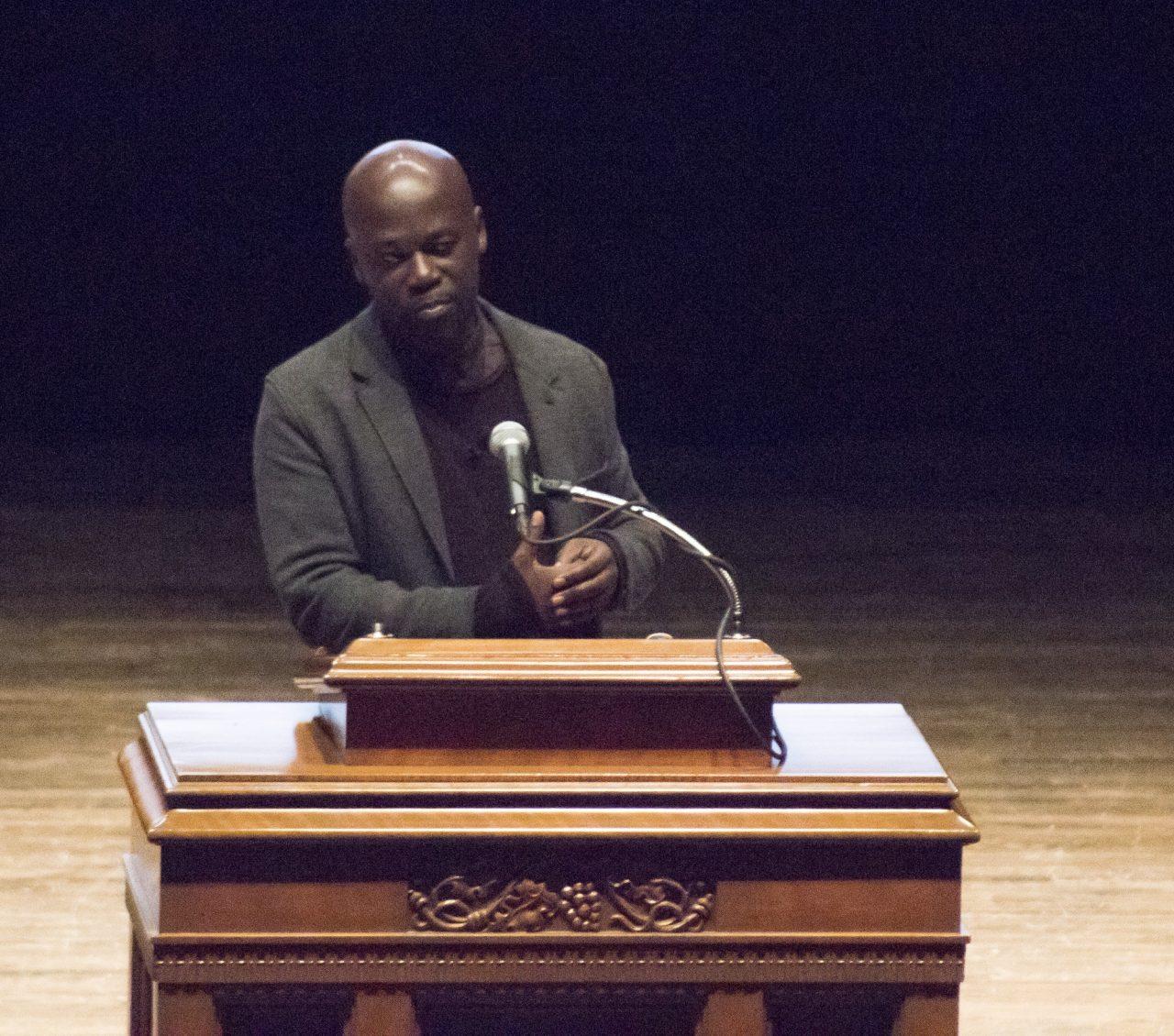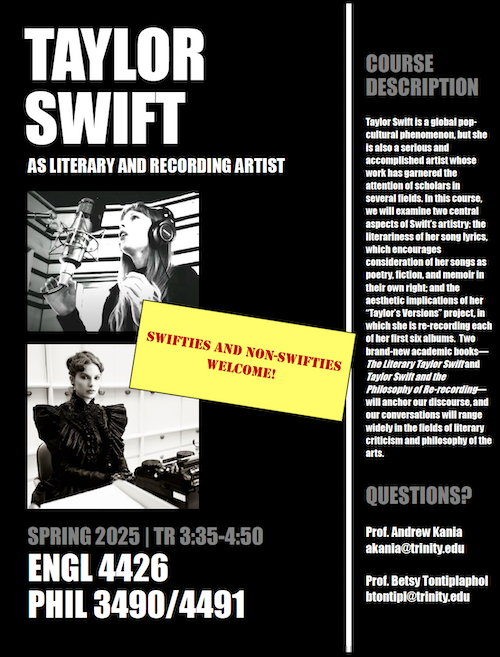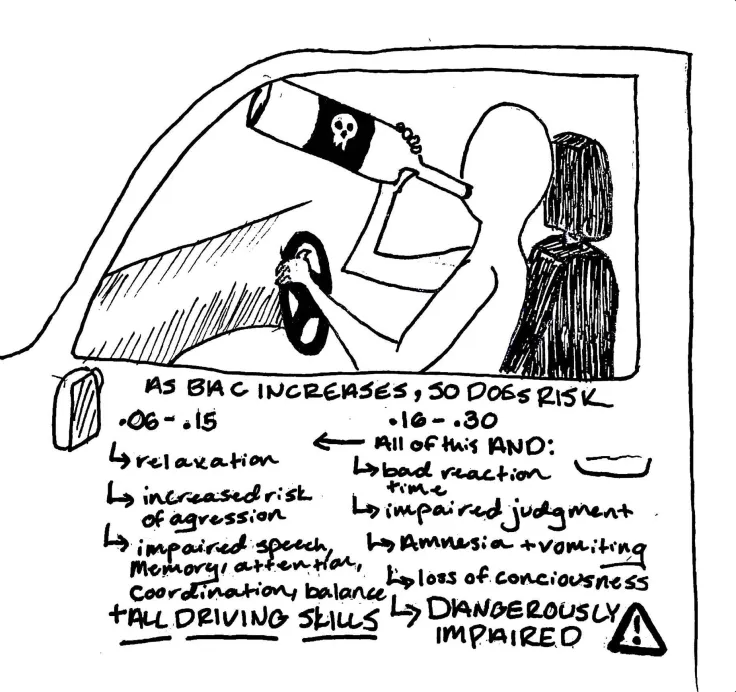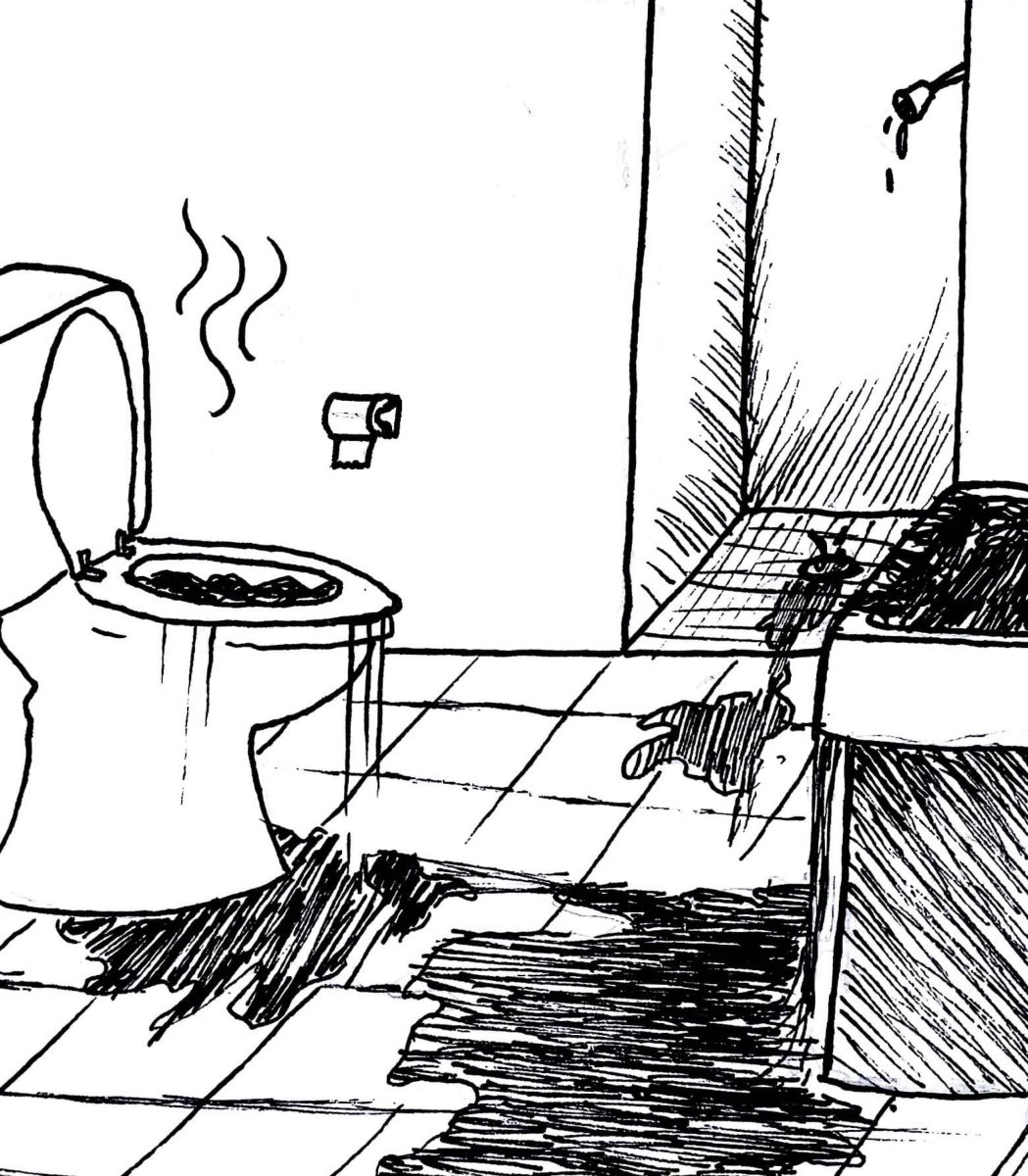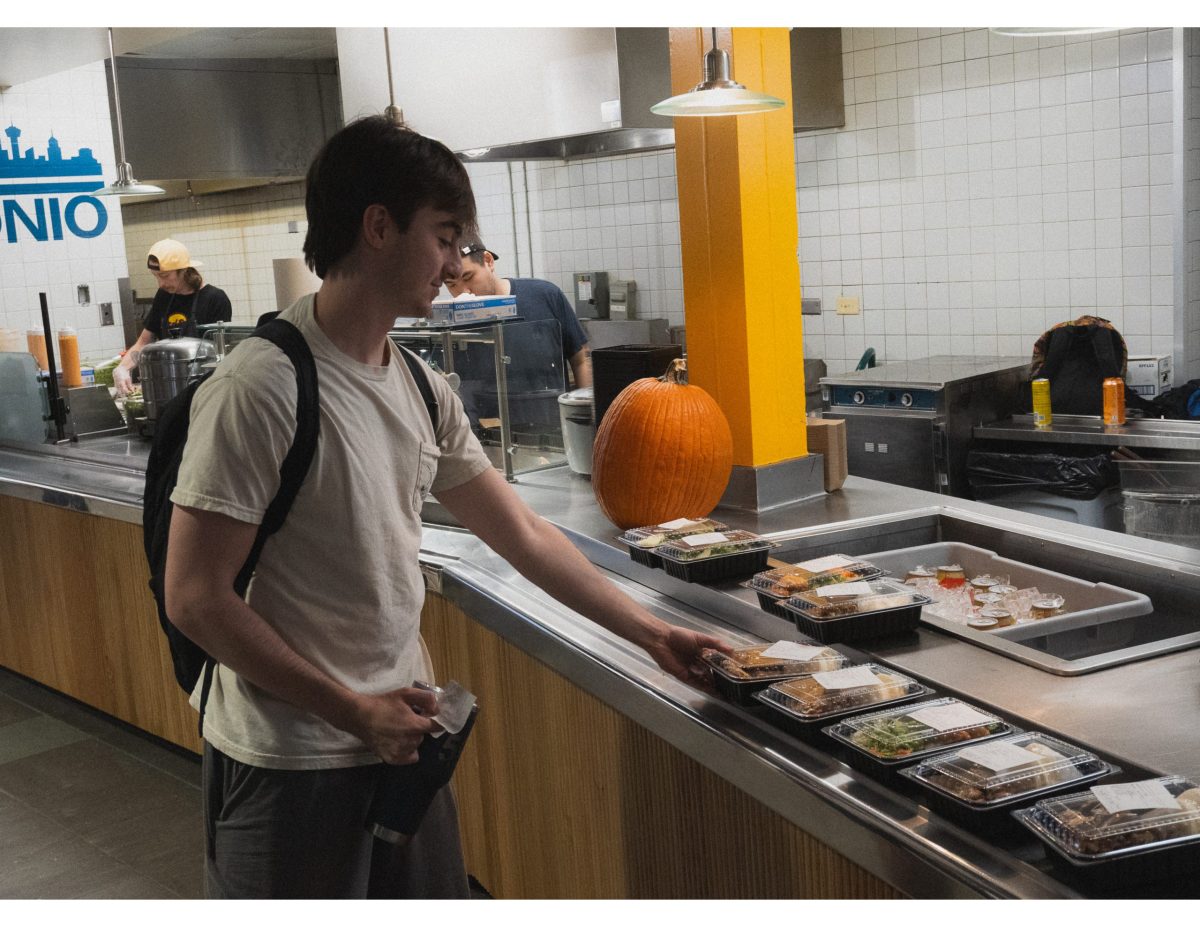Photo by Matthew Claybrook
David Adjaye, renowned Ghanaian British architect, addressed around 1,000 members of the Trinity and San Antonio community in Laurie Auditorium on Jan. 29. After being introduced by Ron Nirenberg, San Antonio’s mayor, Adjaye spoke about his recently completed building, Ruby City.
Ruby City is a contemporary art museum located south of downtown San Antonio at 150 Camp Street. The building was inspired by the late Linda Pace, a local artist and philanthropist, and will house the Linda Pace Foundation’s art collection. Ruby City is Adjaye’s first project in Texas, and it will open its doors in the fall of 2019.
The exterior of the building is made of red concrete worked on in Mexico, paying homage to Pace’s vision of a “ruby city.” There are four main windows that include views of San Antonio’s skyline, the sculpture garden, a panoramic view and a view of Chris Park, a neighborhood dear to Pace’s heart.
“I wanted to make a space that was a moment to just reflect on [Pace] and the city that really made her who she [was],” Adjaye said. “Deliberately, the window is blocked in the center, so you’re forced to go closer to it; your [line of sight] is forced down and across the skyline.”
Once opened, this art museum will be free and open to the public. Adjaye hopes that the museum’s location will make it a centerpiece in public life.
“The building faces this [creek] and creates a public plaza to the waterfront, and then there’s this incredible amphitheater and stairway that meanders down to bring people right to the waterfront, making this an active space that can then make up the trails that are coming through and create that sort of public terminus with this environment,” Adjaye said. “It’s a very simple gesture, but we think that when that’s complete, the sort of public nature of the project will be fully revealed.”
Understanding Adjaye’s architectural design involves researching the history and indigenous heritage of the building’s area.
“You cannot enter the future without going back to the past,” Adjaye said. “This idea of always looking back and understanding [the past] and then understanding the nuances of the present, and using that for me as clues to fabricate fictions about possible futures.”
The Department of Art and Art History sponsored Adjaye’s lecture. Kathryn O’Rourke, art and art history associate professor, asked Adjaye questions at the end of the lecture.
“In its sensitivity to its site and place and simultaneous embeddedness in longstanding international currents of architectural modernism, [Ruby City] marks San Antonio’s evolving character as it, like so many cities, navigates dramatic change and works to conserve its unique character,” O’Rourke wrote in an email interview. “Architecture embodies the far-reaching and disciplined inquiry and broad, worldly optimism at heart of a liberal arts education.”
Sophomore Giselle Britt attended Adjaye’s lecture both for her 19th Century Architecture and Urbanism class and to find connections concerning her future goals.
“In the future, I intend to study city planning, and I find the ties between architecture and city planning critical,” Britt said. “[It was] extremely insightful to hear the thought processes behind such a notable architect as Sir David Adjaye and how he transforms vision into a physical place.”
According to Adjaye, cities are dominating the way of life in our society, and the distinctions that give cities character is fundamental to a citizen’s contentment with their environment and the attraction of a city.
“Increasingly as cities become more similar, I think it becomes more and more important to look at what makes you unique,” Adjaye said. “Whenever I speak to planners and city people who speak to architects I’m always saying that yes, there is a fascination with the production of the images of cities, but what’s more fascinating is when you have something that counters the generic idea of the city.”

